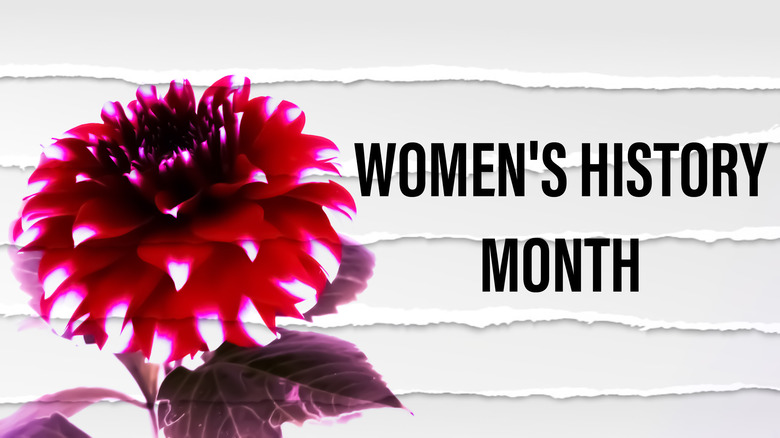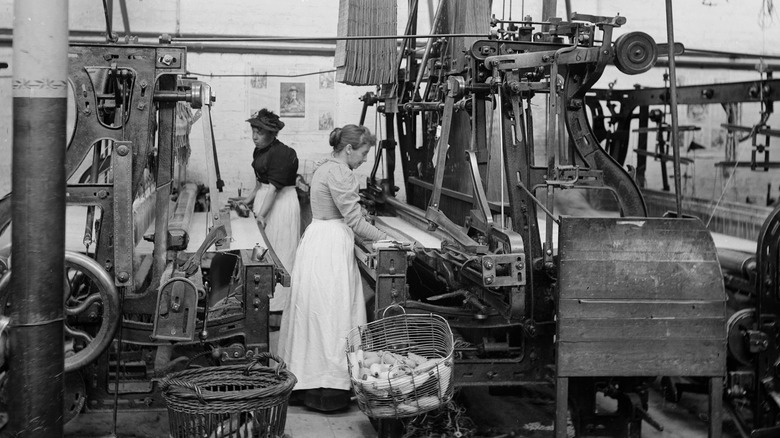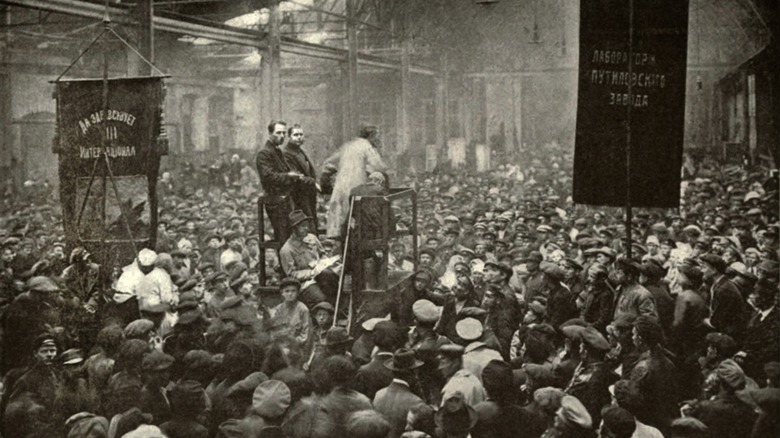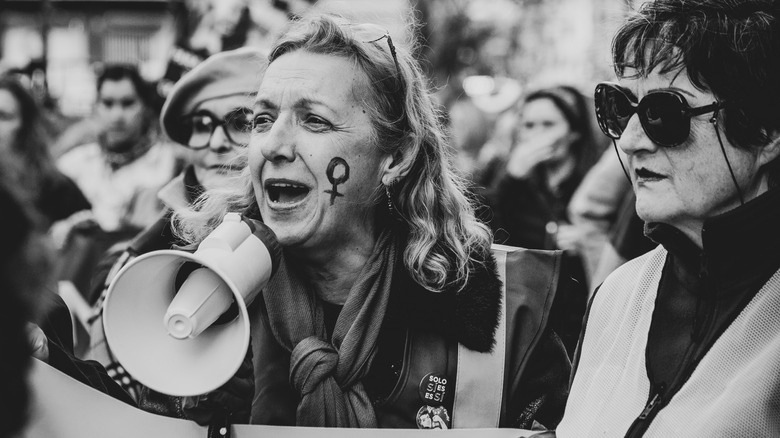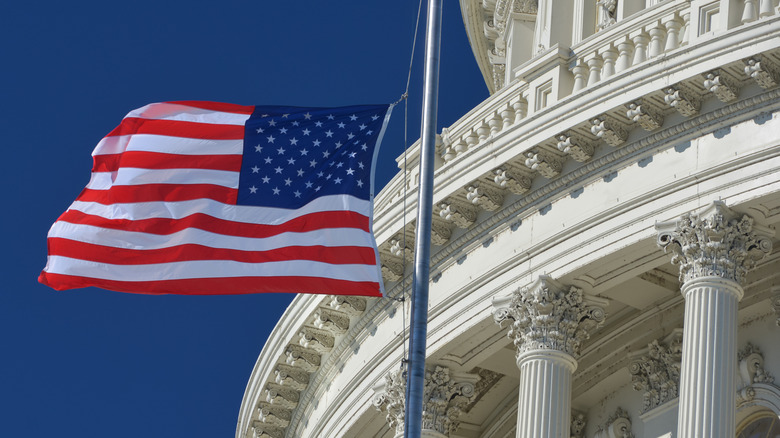How Did March Become Women's History Month?
Until only recently, women's rich, nuanced, and varied contribution to world history remained largely ignored in traditional history books, according to the National Women's History Alliance. Progress has been made to put women in their rightful place alongside men in their influence on global events and culture worldwide. The advent of Women's History Month, which takes place each year in March, is one such example of how far we've come. But why does Women's History Month always take place in March?
Much like the story of women's liberation itself, the reason why Women's History Month is celebrated in March includes struggle, determination, and many setbacks. It didn't all happen at once, and how women's history is observed today looked different all throughout time. It started out as one single day of observance, and the United States came to it somewhat later. Understanding how March became Women's History Month is like telling the story of female empowerment itself.
The garment workers' strike
The most commonly accepted explanation for why March is Women's History Month points toward a New York female garment workers' strike said to have happened either in March of 1857 or in March of 1908, depending on which version you hear. The story goes that groups of women employed in factories unionized and decided to strike for better working conditions, as well as the right to vote, among other issues, per Britannica. For this reason, it simply made sense to celebrate Women's History Month in March.
Problem is, there's absolutely no historical evidence that ever happened, nor is there any proof that such a union of female garment workers ever existed, as the French news outlet CNRS News reports. If there was, no contemporary newspapers covered it, nor did the founders of Women's Workers' Day (a forerunner of Women's History Month) ever mention it. It's now commonly believed the female garment workers' origin story is a myth. If there never really was a springtime 19th or early 20th century female garment workers' strike, what then, is the real story?
Women Workers' Day started in Denmark
Women's History Month actually started as just one day. The idea was first floated in 1910, at the Second International Socialist Women's Conference in Denmark, per CNRS News. The idea at the time was to mobilize women "in agreement with class-conscious proletarian political and trade-union organizations," according to CNRS. By 1913, International Women Workers' Day took off, especially in Russia. In 1917, there was a Russian female workers' uprising in Petrograd (now St. Petersburg) on March 8. That incident is considered by some historians to be the opening salvo of the Bolshevik Revolution. (A Petrograd factory strike is pictured above.)
From that point forward, March 8 came to be known as an unofficial women's day, although Women's Day itself, the precursor to Women's History Month, was not officially observed until 1945. Today, that date is known as Mother's Day in many socialist countries. The socialist and communist roots of Women's Day naturally left the United States reluctant to adopt the tradition stateside. Distancing the occasion from the Soviets may also partially explain the fabrication of the New York women garment workers' strike, which first showed up in 1957 in France, per Britannica.
National Women's History Week
Bearing in mind the communist and socialist background of Women's Day , U.S. women and even feminist activists refrained from observing March 8, even though it was already popular all throughout Europe, per Britannica. (A demonstration in Spain is pictured above). By the 1970s, the paucity of women's history taught in public schools came to a crisis point, in the view of many scholars and activists, as the National Women's History Alliance reports. For this reason, celebrations of female contributions to history, like Sonoma County, California's "National Women's History Week," were born.
By 1979, the effort to nationalize "Women's National History Week" came about. In 1980, President Jimmy Carter issued a Presidential Proclamation calling the week of March 8 National Women's History Week. At the time, President Carter said, "From the first settlers who came to our shores, from the first American Indian families who befriended them, men and women have worked together to build this nation. Too often the women were unsung and sometimes their contributions went unnoticed" (via National Women's History Alliance).
A week turns into a month
Following President Carter's proclamation, Congress passed a resolution one year later, led by the National Women's History Project, an organization now called the National Women's History Alliance, per National Women's History Museum. Shortly thereafter, many school districts across the country were producing curriculum supporting the event, with Maryland, Oregon, and Alaska among the first, as the National Women's History Alliance reports. Each year, the exact date of Women's History Week changed, but it was always the week of March 8.
By 1986, 14 American states expanded the observance to the whole month of March, and by 1987, the U.S Congress made it official: The entire month of March would be Women's History Month, per an annual proclamation from the president, from 1988 through 1994. Since 1995, each president has kept up the practice. Since then, Women's History Months have been declared each March in Australia and the U.K. Canada also observes Women's History Month each October, according to National Today.
The future of Women's History Month
Now, Women's History Month is observed every March by schools, government agencies, and other public and private institutions all over America. Each year, the Library of Congress, the National Archives and Records Administration, and National Endowment for the Humanities, among other government agencies, offer guidance for activities, talks, and themes, and other helpful tools to mark the event, per the Women's History Month website.
In addition to countries already mentioned, Women's History Month has spread all over the world, into countries like Japan, Ukraine, Saudi Arabia, and all across Africa (via the National Women's History Alliance). Although much work remains to be done for women's contributions to society to be fully appreciated, and many challenges remain for women worldwide, the growing prevalence and popularity of Women's History Month is one sure sign that progress is happening, little by little. A new generation of women now takes the lead.
